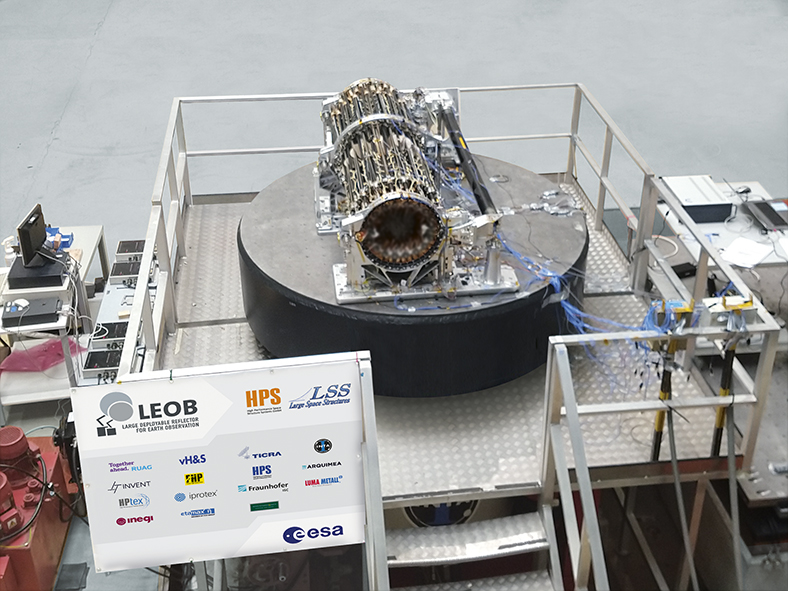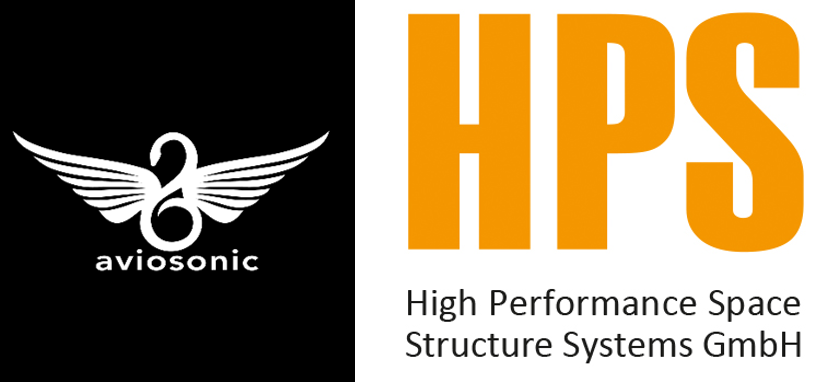Juli 2023
HPS Space News
HPS congratulates ESA and TAS to the launch of EUCLID and to the successful checkout of the downlink antennan chain!
State-of-the-art antenna to serve one of the most ambitious science missions ever
HPS, leading provider of advanced antenna- and reflector-technologies, applauds the ESA – European Space Agency and to the mission prime ThalesAleniaSpace (Italy) to the launch of space mission EUCLID (within European Space Agency’s Cosmic Vision Programme) on Saturday, 01.07.2023, which aims to unravel the mysteries of the dark universe and gain insights into the nature of „dark matter“ and „dark energy“. On Sunday, 09.07.2023 it has been confirmed that the „K-band signal has been received from EUCLID“ by the ground station on Earth.
Euclid is now the biggest transmitter of data (in terms of data rate of about 74 Mbps) from trans-lunar space: Read here the article from ESA
EUCLID´s “Antenna Reflector Assembly (ARA)” developed by HPS, together with its subcontractor Invent represents a significant advancement in space communication technology. Its innovative design and advanced features make it an ideal choice for the mission, enabling high-speed data transmission and reception from the spacecraft to Earth and back, bridging the distance of 1,5 Mio km. A deep “Thank You” for the trust into our team to our Customer Chain TAS (SP) – TAS (IT) – ESA, backed by our German Space Agency DLR.
Key features of the HPS ARA:
- Enhanced Signal Reception: The CFRP-based reflector’s high-gain capabilities, also under high temperature grades far away in L2-orbit, ensure optimal reception of the weak signals from the EUCLID spacecraft, enabling precise data collection on Earth from distant corners of the universe.
- High-Speed Data Transmission: Equipped with the reflector‘s state-of-the-art transmission CFRP material technology, the HPS-antenna facilitates rapid data transfer in K-band, allowing for real-time analysis and quick response to mission requirements.
- Robustness and Reliability: Designed to withstand the harsh conditions during launch and in space, the reflector assembly is built with durable materials.
- Compact and Lightweight: HPS` antenna design prioritizes accommodation efficiency without compromising its performance. Its compact size and lightweight construction optimize interface loads to the spacecraft and payload capacity.
„We are thrilled to contribute significantly to the EUCLID mission with our advanced reflector assembly,“ says Ernst K. Pfeiffer, CEO of HPS. „Our cutting-edge CFRP-technology, developed for more than 15 years, can now play a crucial role in facilitating seamless communication between the spacecraft and ground stations, allowing the investigation of dark material by huge amount of data downloaded to Earth.“
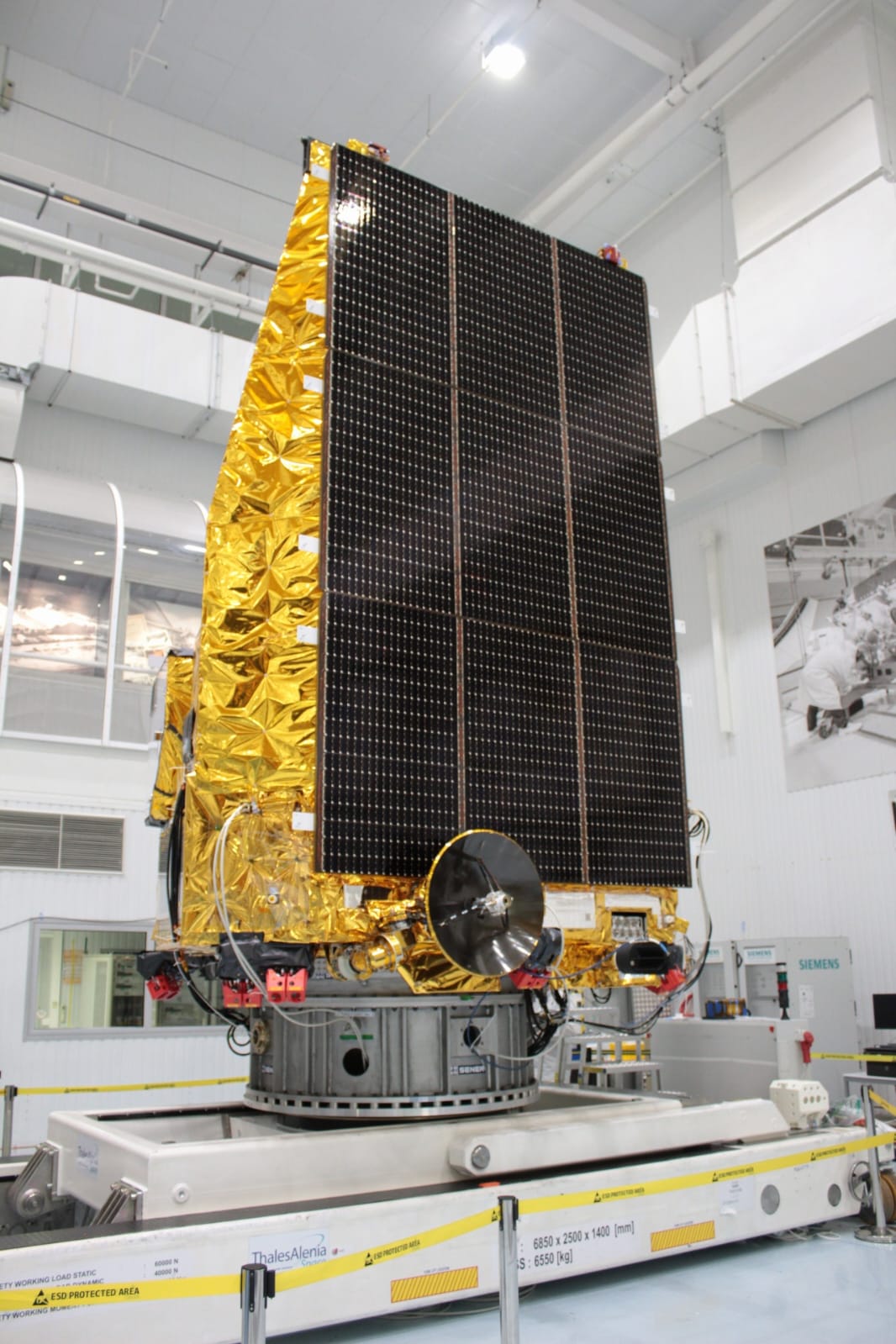
Bild von ESA – European Space Agency
For the Sake of Safety and Sustainability in Space: OKAPI:Orbits´ AI now available as Assistance System to ADEO Deorbit Sail for Satellites
Juni 2023
Germany´s leading collision avoidance system reliably predicts the perfect slot for descent through tons of debris and space traffic.
When, after two, five or more years of operation, a satellite is supposed to leave its orbit and re-enter Earth, it’s a ride on the skyway to hell in two respects: first, for the satellite which is destined to burn up in the atmosphere, but also for other satellites as well as for an encounter with scrap parts that could hit it like unguided missiles – and produce even more junk. Satellites equipped with the ADEO braking sail from HPS are already in automatic descent mode. From now on, however, this can be upgraded by the Collision Avoidance system from industry-leading German startup OKAPI:Orbits. The company emerged as a spinoff from Braunschweig University of Technology in 2018 after over 40 years of intensive research. This Collision Avoidance System minimizes the collision risk during the de-orbit trajectory by figuring out the situation even ten days in advance. Appropriate maneuvers are also recommended for the satellite’s control system. This is made possible by the unique AI behind OKAPI:Orbits.
“Picture a distant view of 6.72 million kilometers of orbits on which about 10,000 satellites, 1,000,000 large and medium objects and 130,000,000 small ones exist that are not currently trackable. This is how complex computing operations is. Now, we should also take into account their velocity of 20,000 to 30,000 kilometers per hour. To any human sensibility, this is pure chaos, which the artificial intelligence behind our Collision Avoidance Software handles with aplomb,“ says OKAPI’s company CEO Kristina Nikolaus.
Ernst K. Pfeiffer, CEO of HPS, a medium-sized innovation company, adds, „Our ADEO braking system not only performs the fastest possible passive descent even under adverse conditions – for example, when the satellite is already dead – it is also the deorbit solution with the largest safety reserve directly on board. Customers who don’t want to rely solely on their own software to control their satellites will find a unique safety architecture for the deorbit of almost all satellites with ADEO’s optional assistance systems for position tracking (Aviosonic) and optimal descent prediction (OKAPI:Orbits) at HPS.“ ADEO is under discussion as a deorbit subsystem for the satellites of Europe’s coming constellation IRIS2 and “together with the features of Aviosonic and OKAPI:Orbits it levers the constellation to the most secure and sustainable one also after satellites’ nominal lifetime.”
During descent, the combination of all three technologies onboard the satellites will increase significantly the orbit determination and prediction, which is a unique advantage also for other satellites, constellations and stakeholders like owners, operators, and insurers.
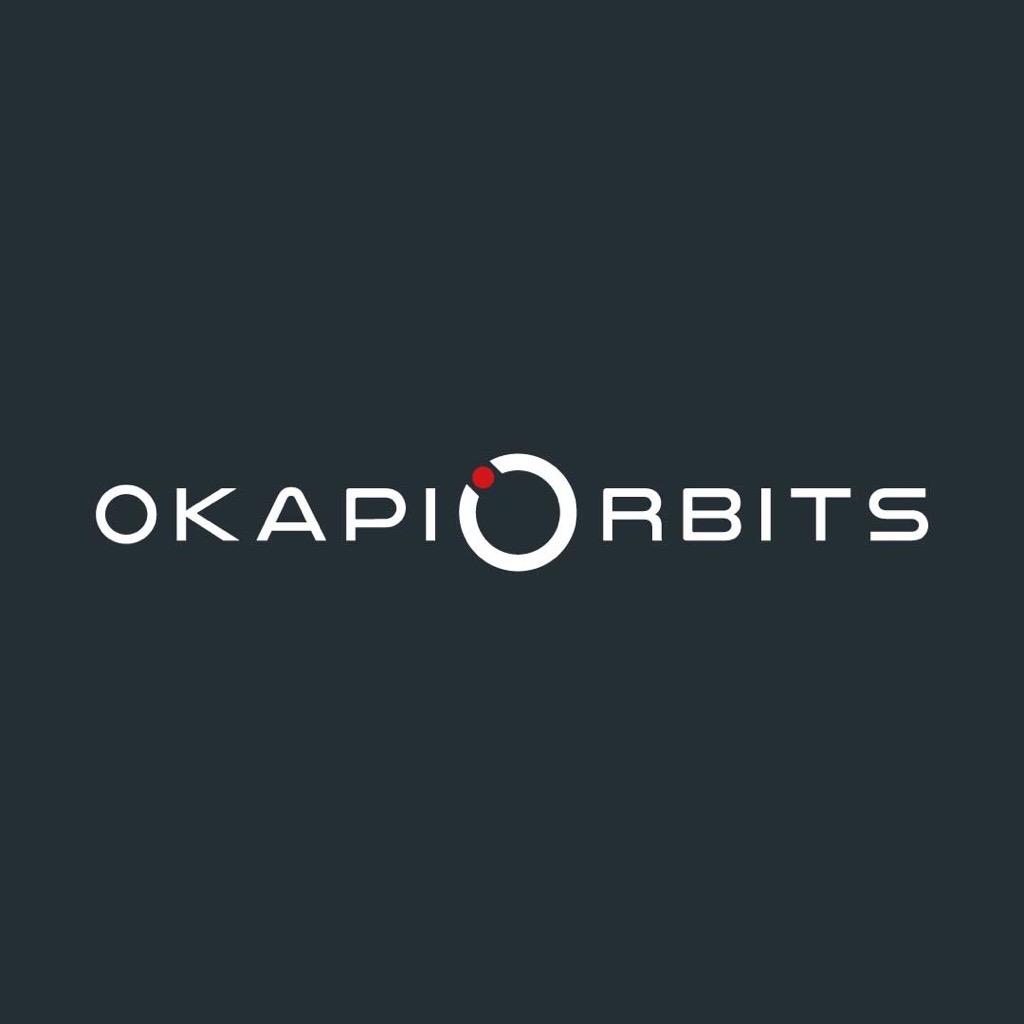
HPS Joins Net Zero Space Initiative to Drive Sustainable Space-Tech Innovation
June 2023
HPS Joins Net Zero Space Initiative to Drive Sustainable Space-Tech Innovation
[Munich-Bucharest-Paris, June 12th, 2023] – HPS GmbH, a leading technology company specializing in cutting-edge solutions, is pleased to announce its membership in the Net Zero Space Initiative, an ambitious global movement dedicated to supporting sustainable practices and innovations in space.
The Net Zero Space Initiative brings together industry leaders, organizations, and experts from various sectors to collaborate on finding concrete solutions to combat space debris, thus preserving not only the economic and scientific benefits of outer space, but also its strategic potential in addressing urgent challenges such as climate change. By joining this esteemed network, HPS reaffirms its commitment to environmental stewardship and especially to a sustainable development of space infrastructures.
As a member of the Zero Space Initiative, HPS GmbH will actively contribute to the collective efforts aimed at developing sustainable technologies and practices across its operations. The company will leverage its expertise and its political as well as its industrial network to drive transformative change.
HPS drives advanced technology solutions like the world market leading deployable deorbit sail “ADEO” which enables quick decay of satellites until re-entry, reducing the risk of in-orbit collisions. By joining the Net Zero Space Initiative, the company aims to accelerate these efforts, collaborating with like-minded partners and leveraging collective knowledge to drive greater impact.
„We feel that as a part of the Net Zero Space Initiative we are with the right people,“ said Dr. Ernst K. Pfeiffer, CEO of HPS. „At HPS, we believe that sustainability is both, a responsibility and an opportunity for innovation.
By collaborating with the Net Zero Space Initiative, we can amplify our efforts in developing and implementing sustainable solutions, contributing to a “greener” future in space and for our planet.“
As an advocate for sustainability, HPS GmbH Germany, as well as its affiliate HPS S.R.L. Romania, remain committed to driving positive change through its products, services, and operations. The company’s membership in the Net Zero Space Initiative represents a significant milestone in its sustainability journey.

HPS is Prepared to Provide ADEO Special Stealth Sail Edition for Europe´s IRIS2 Constellation Satellites
Mai 2023
HPS is Prepared to Provide ADEO Special Stealth Sail Edition for Europe´s IRIS² Constellation Satellites
The ever-growing number of satellites orbiting Earth presents a significant challenge in terms of space debris management. As space agencies and private companies deploy increasing numbers of satellites, finding effective and sustainable solutions for their safe disposal has become paramount. In this regard, the ADEO Deorbit Sail, developed by HPS offers a groundbreaking technology that enables controlled and efficient satellite deorbiting for mitigating space debris and ensuring long-term sustainability in space. By harnessing the natural forces present in space, such as solar radiation pressure and atmospheric drag, the sail facilitates controlled reentry of satellites into Earth’s atmosphere at the end of their operational life.
ADEO has already reached ESA´s hightest level of maturity, TRL 9 and proven its reliability on a number of spaceflights; getting ready to serve Europe´s new constellation IRIS2 its NewSpace-team at HPS, Munich, take it even one step further and introduce the ADEO special “stealth” sail edition. While irritating reflections and view blocking effects of conventional constellations like Starlink cause a permanent nuisance to other users of space like astronomers during flight and deorbit, the constructors of Europe´s constellation IRIS2 are going can count on to receive from HPS an exclusive offer for a special version: the ADEO Stealth Sail –invisible, fully transparent and also available for most satellite types and operational orbits.
As HPS-CEO Ernst K. Pfeiffer explains: “Our ADEO deorbit system already presents numerous benefits and applications in satellite end-of-life management like cost- & mass-effective and sustainable deorbiting, compliance with current and future Space Debris Mitigation Guidelines, flexibility and adaptability. Now, with the special stealth version for dedicated to the architects of Europe´s IRIS2 constellation we take the decisive step to let Europe set yet another standard in space sustainability”.
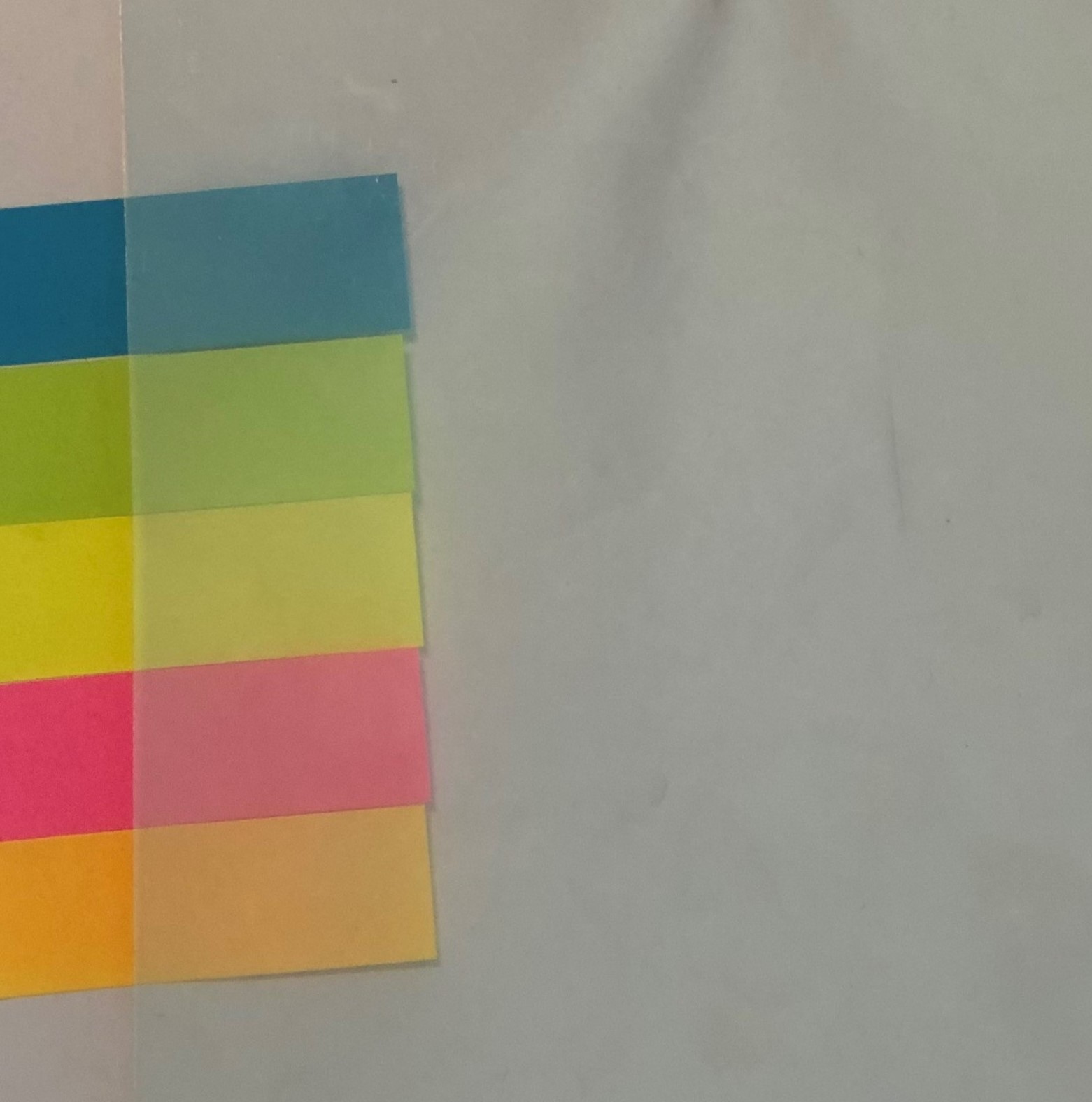
MoU der Raumfahrt-KMU Aviosonic und HPS zur gemeinsamen Bekämpfung von Weltraumschrott – rechtzeitig für Europas neue Konstellation Iris2
Mai 2022
Aviosonics patentierter Positionsanzeiger DeCAS für Flugbahn- und Wiedereintrittsvorhersage baut den Hightech-Vorsprung von Europas Satelliten-Deorbit-System „ADEO“ unangreifbar aus
(München-Mailand, 10. Mai 2023). Mit testiertem Reifegrad TRL-9 und solider Flugerfahrung ist das Segelsystem „ADEO“ bereits jetzt das führende Deorbit-Gerät, um fast alle Satelliten schnell aus der Umlaufbahn zu bringen und so zu verhindern, dass Raumfahrzeuge nach ihrem Missionsende entweder selbst auf Jahre hinaus zu neuem Weltraumschrott werden oder andere zu solchem machen. Weil es ein Segel ist, verursacht es selbst keine Verschmutzung, weder chemisch noch sonst, und weil eben dieses Segel in der nächsten Version auch transparent und absolut entspiegelt sein wird, verursacht es bei keinem Weltraumbeobachter auf der Erde irgendwelche Irritationen. Der Münchner Spacetech-Innovator HPS, ein mittelständisches Unternehmen mit einer Tochtergesellschaft in Rumänien und insgesamt 80 Mitarbeitern, hat – zusammen mit mehreren institutionellen und industriellen Partnern – 12 Jahre ständiger Entwicklung und Qualifizierung in ADEO investiert und ist nun bereit, einen weiteren großen Schritt mit dem Zusammenschluss innovativer Kräfte von HPS und Aviosonic, Mailand/Italien zu unternehmen.
Aviosonic Space Tech, gegründet 2015, ist Eigentümer des patentierten DeCAS-Systems (Debris Collision Alert System) für Positionsverfolgung und Wiedereintritts-Prognose von Raumfahrzeugen. DeCAS, eine nur 1U mm dünne Karte hält ständig Verbindung mit der Bodenkontrolle und ermöglicht so präzise Information zur Satellitenposition und erlaubt die Berechnung von Wiedereintrittsszenarien in Echtzeit mit dem Ziel der Kollisionswarnung und -vermeidung für andere Satelliten und auch für Flugzeuge sowie der Warnung von Regierungsinstitutionen. Technik und Modularität ermöglichen den Einbau von DeCAS in jegliche Raumfahrzeuge und den Service je nach Missionsanforderungen. DeCAS ist raumerprobt und eine einzigartige Methode für Positionsverfolgung und Re-Entry-Prognose in Echtzeit.
Prof. Piermarco, CEO von Aviosonic Space Tech:”DeCAS und ADEO bilden zusammen ein einzigartiges Produkt für sicheren Satellitenbetrieb während des Fluges und der Wiedereintrittsphase, sogar dann, wenn der Satellit selbst ohne Funktion sein sollte. Diese Sicherheitsinformation wird auch von den Air Traffic Management-Systemen benötigt. Die Zusammenarbeit von Aviosonic Space Tech und HPS ist der Beleg, dass zur Garantie der Sicherheit des Weltraumbetriebs auch internationale Zusammenarbeit auf Mittelstandsebene notwendig ist.“
HPS-Geschäftsführer Ernst K. Pfeiffer blickt felsenfest zuversichtlich auf die Zukunft von ADEO auf dem Weltmarkt und betont: „ADEO hat alle Fakten auf seiner Seite: Erstens braucht die gesamte Raumfahrtindustrie dringend ein Deorbit-Gerät wie ADEO, denn je schneller Orbitpositionen wieder frei werden, desto länger können wir den Weltraum als nachhaltige Umgebung erhalten. Und, von Punkt Zwei bis unendlich: ADEO vereint TRL9 und Flight Heritage, bietet eine umfassende Modellpalette, schlägt sowohl ökonomisch als auch ökologisch jede andere Art von Deorbit-Gerät, außerdem ist es bei HPS bereits in Serie. Jetzt schließen wir uns sogar mit dem herausragenden Innovator auf seinem Gebieten zusammen, und noch andere werden folgen; das unterstreicht einmal mehr, was ADEO im Kern ist: 100 Prozent europäisch, 100 Prozent KMU, 100 Prozent Nachhaltigkeit in der Raumfahrt – und jetzt gerade auch genau das, was Europa will für Iris2.“
Kontakt für weitere Informationen:
HPS: Dr. Daniel Stelzl, stelzl@hps-gmbh.com
Aviosonic: Prof. Piermarco Martegani, Piermarco.Martegani@aviosonic.it
Dossier ADEO: Deutsch (https://www.hps-gmbh.com/tag/adeo/)
Dossier ADEO: English: (https://www.hps-gmbh.com/en/tag/adeo-en/)
Video: https://youtu.be/pUeSZzdn_6c
April 2023
Alle Startfenster schließen für Satelliten ohne ADEO oder gleichwertige Deorbit-Technologie
Nach FCC, SpaceX und ESA machen jetzt auch die drei deutschen Startups, die um die Pole-Position der kleineren Trägerraketen auf dem kommerziellen Markt kämpfen deutlich: Tickets ins All werden bald nur noch für Satelliten erhältlich sein, die mit ADEO oder gleichwertiger Deorbit-Technik nach Missionsende schnell entsorgt werden. Die Unternehmen machten dies kürzlich in Stellungnahmen gegenüber dem deutschen Raumfahrtmagazin „Raumfahrt Concret“ deutlich.
Weitere Einzelheiten finden Sie unter https://www.hps-gmbh.com/wp-content/uploads/2023/03/RCI-Newsletter-1-2023.pdf.
Dazu Ernst K. Pfeiffer, CEO von HPS, dem deutschen Raumfahrtunternehmen, das ADEO zur ersten Wahl der Raumfahrtindustrie in der Deorbit-Technik entwickelt hat: „Wenn es auch sonst teils exorbitante Meinungsunterschiede zu Regeln und Prinzipien in der Raumfahrt gibt, ist es umso erfreulicher zu sehen, dass die Diskussion im Fall der Deorbit-Regeln einhellig vom Spirit für `clean-green space´ geprägt ist.“
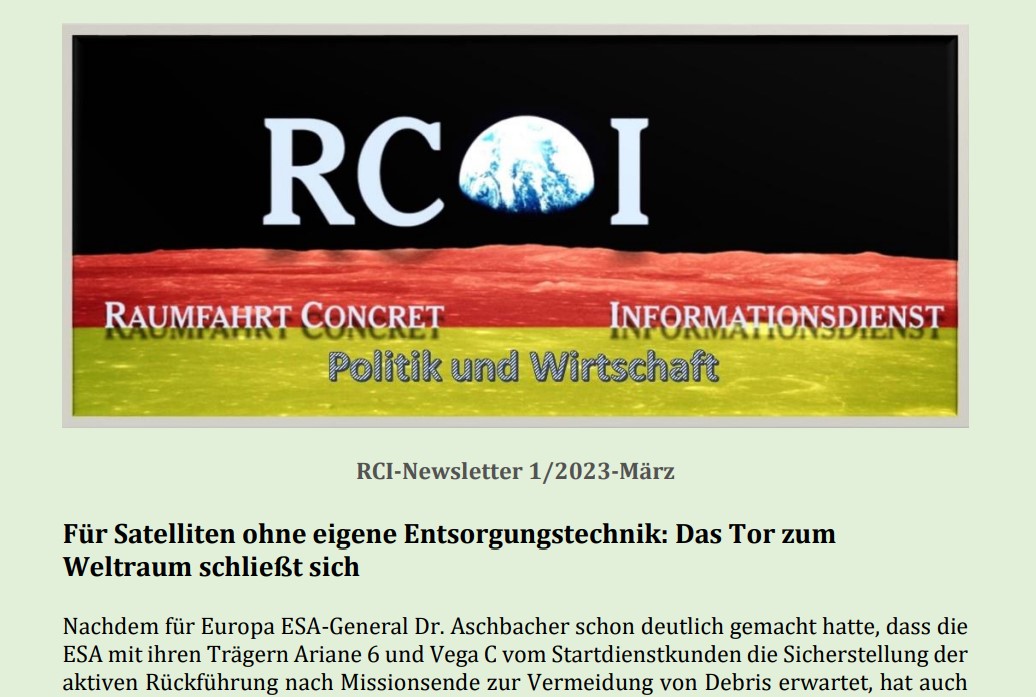
Juli 2022
Flug von ADEO-N3 am Ende des Jahres 2022
In der Hoch-Zeit der Sommerferien herrscht bei HPS in München Hochdruck in den Vorbereitungen für die dritte Mission des innovativen Weltraumbremssegels ADEO, welches sich automatisch am Ende der Mission entfaltet und „seinen“ Satelliten bis zu 20-mal schneller zum Verglühen in die Atmosphäre treibt. So wird Schrott vermieden und Raumfahrt nachhaltig.
Schon Ende August wird es in Italien zur Montage auf dem ION „Satellite Carrier“, D-Orbit´s „orbital transfer vehicle (OTV)“ angeliefert. Es ist die ADEO-N-Version für Kleinsatelliten mit einer Segelfläche von 5 qm.
Gegen Ende 2022 wird eine Falcon 9 Rakete von SpaceX den Satelliten in einen Orbit mit Mittlerer-Inklination bringen. Mit der bis Ende des Jahres dann angesammelten Flight Heritage wird ADEO 2023 in ein neues Raumfahrt-Zeitalter starten.
Denn zumindest für europäische Missionen bzw. Missionen von Europa aus wird es dann in aller Wahrscheinlichkeit keine Starts mehr ohne Deorbit-Tech an Bord mehr geben:
Der Green Deal der EU gilt dann auch für clean-green missions im Raum.
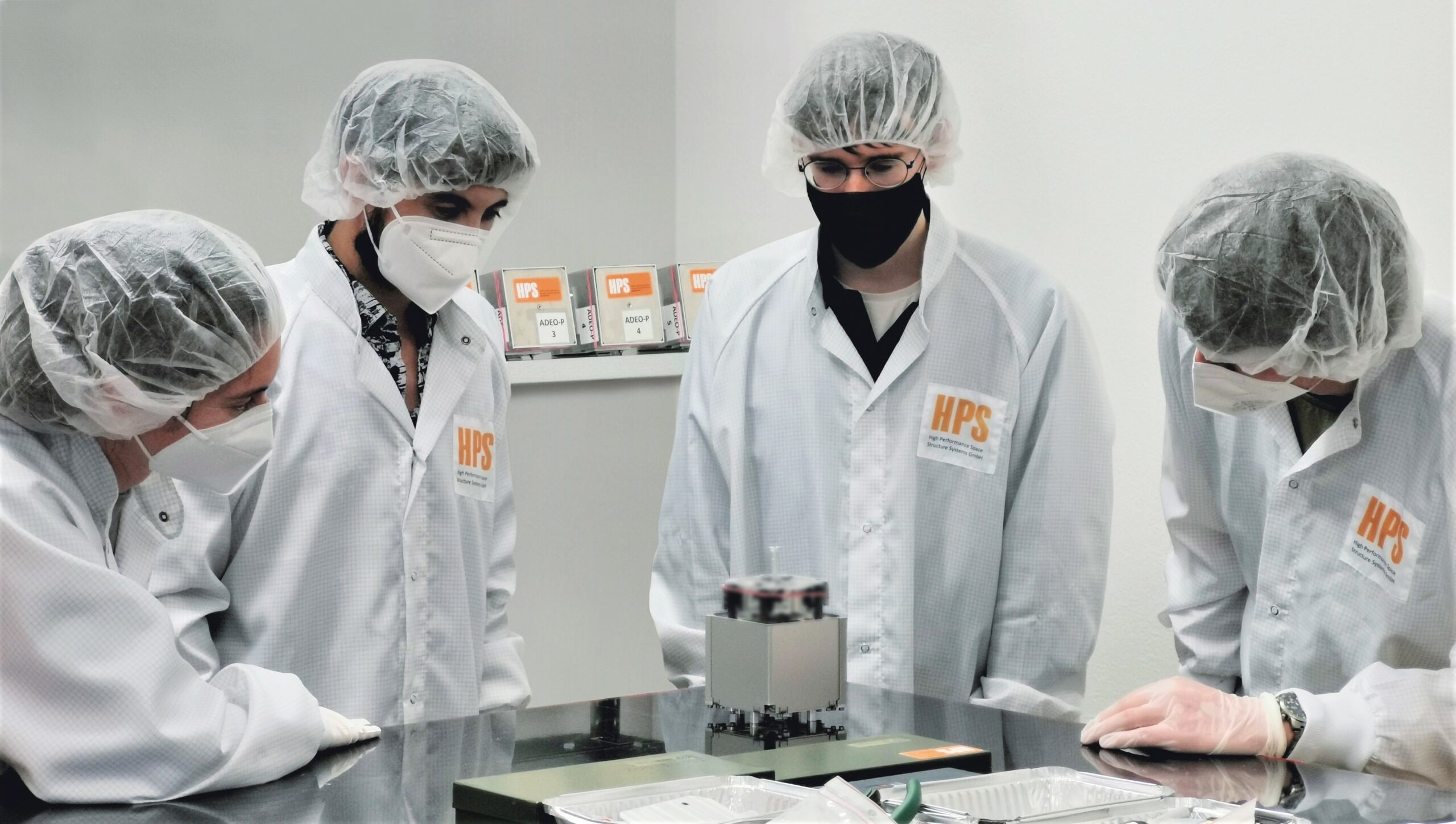
June 2022
Breaking News: ADEO dragsail by HPS as standard deorbit device for „Reflex Aerospace satellites“
Next milestone in commercializing ADEO dragsail for deorbit:
Reflex Aerospace (supplier of tailor made, high performance small satellite platforms) announces to use the automatic ADEO dragsail by HPS as standard deorbit device for their satellites. ADEO will guarantee a maximum deorbiting time of less than 5 years and contribute to Reflex Aerospace´s philosophy of responsible, sustainable and future-oriented space missions. Together we realize CleanGreen Space missions!
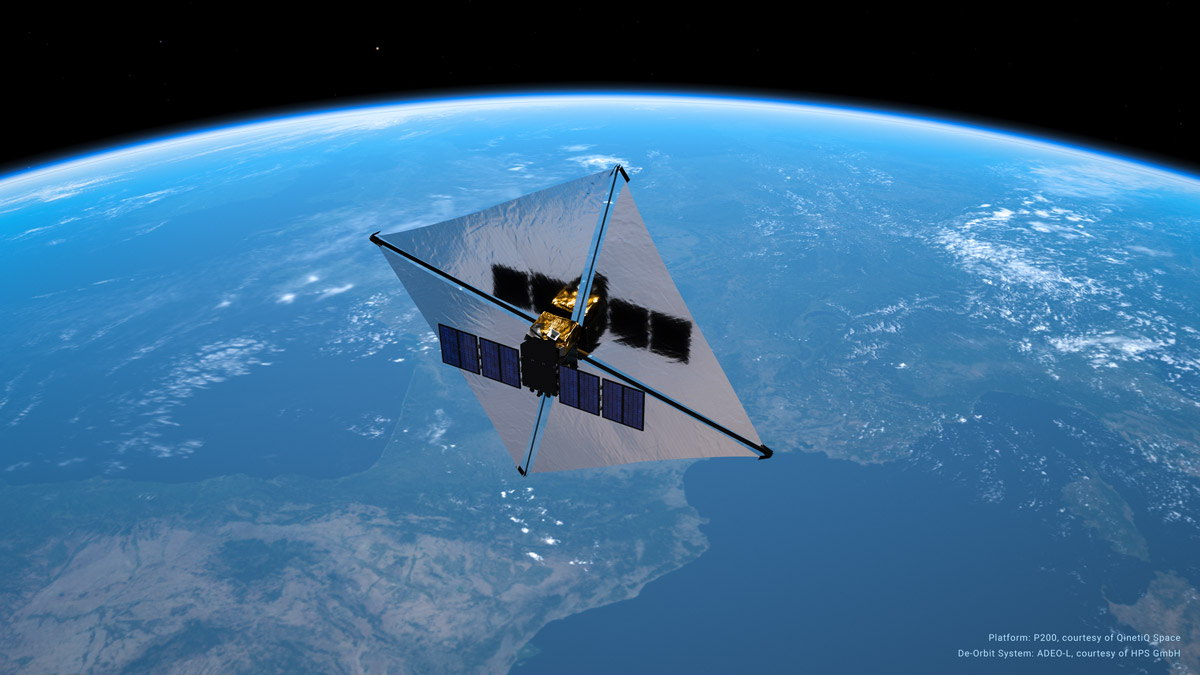
Erfolgsstory mit HPS an Board: EnMAP
May 2022
German Satellite EnMAP sends first pictures
The EnMAP hyperspectral imaging Satellite for VNIR/SWIR has successfully been launched on April 1st.
Now, the first images presented by Deutsches Zentrum für Luft- und Raumfahrt (DLR) demonstrates the excellent performance of the system.
HPS (DE) is proud of being on board of this great mission with the
- extremely light-weighted Telescope Baffle (as subcontractor to the Mission Prime OHB System) and with
- Thermal H/W for the Apperture Diffusor Mechanism (in contract to Beyond Gravity).
HPS contributed also partly with its structural and thermal #engineering expertise during various EnMAP Phases.
More information about the mission can be found on:
https://www.dlr.de/content/de/artikel/news/2022/02/20220504_deutscher-umweltsatellit-enmap-sendet-erste-bilder.html?fbclid=IwAR38A-lRFhXnyqKJMIq3cTEHmPyeyMwotOXBRxR_78S9ww8rnBIuJSi3o1I
More information about our product can be found on: https://www.hps-gmbh.com/portfolio/subsystem-integrals/lightweight-structures-2/

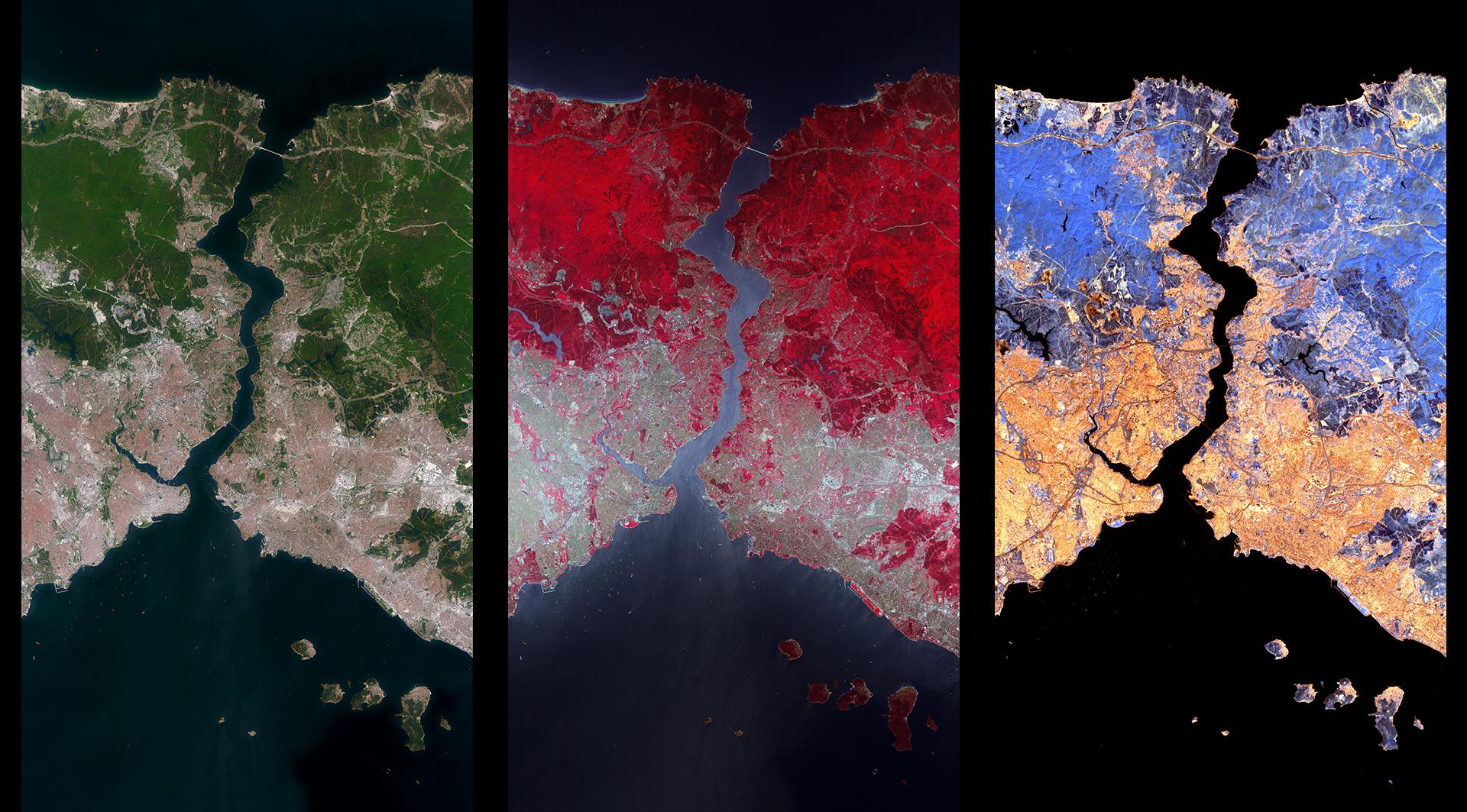
©DLR
March 2022
LDRS successfully passed the Requirements Review #2
Following, in 2021, the successful passing of both the Copernicus Imaging Microwave Radiometer (CIMR) System Requirements Review and the Large Deployable Reflector Subsystem (LDRS) TRL 5 Declaration milestones, our CIMR-LDRS team has now successfully passed, in March 2022, the LDRS Requirements Review #2. Design requirements for the Ka-band LDRS EQM are now frozen and the EQM detailed design can begin.
Upcoming major milestones in 2022 include both the LDRS ICD Freeze and the LDRS TRL 6 Declaration this Summer, followed by the LDRS PDR planned in Q4, 2022. An important part of the LDRS TRL 6 Declaration milestone is the successful execution of Environmental Test campaign of the 8m diameter LEOB-EM Deployable Reflector by our partner, LSS, being performed at INTA (SP) under the Prime Contract leadership of HPS. Random and Sine Vibration testing is complete and Thermal Vacuum testing is currently in-progress.
CIMR is part of the European Space Agency (ESA) Copernicus program and on CIMR, HPS-Germany is the Prime Contractor for the LDRS under direct contract to the Mission Prime, Thales Alenia Space-Italy. HPS is working closely with its partner, LSS, as the Large Deployable Reflector responsible, and 15 other subcontractors and suppliers from 7 European nations to produce the first-ever all-European LDRS.
